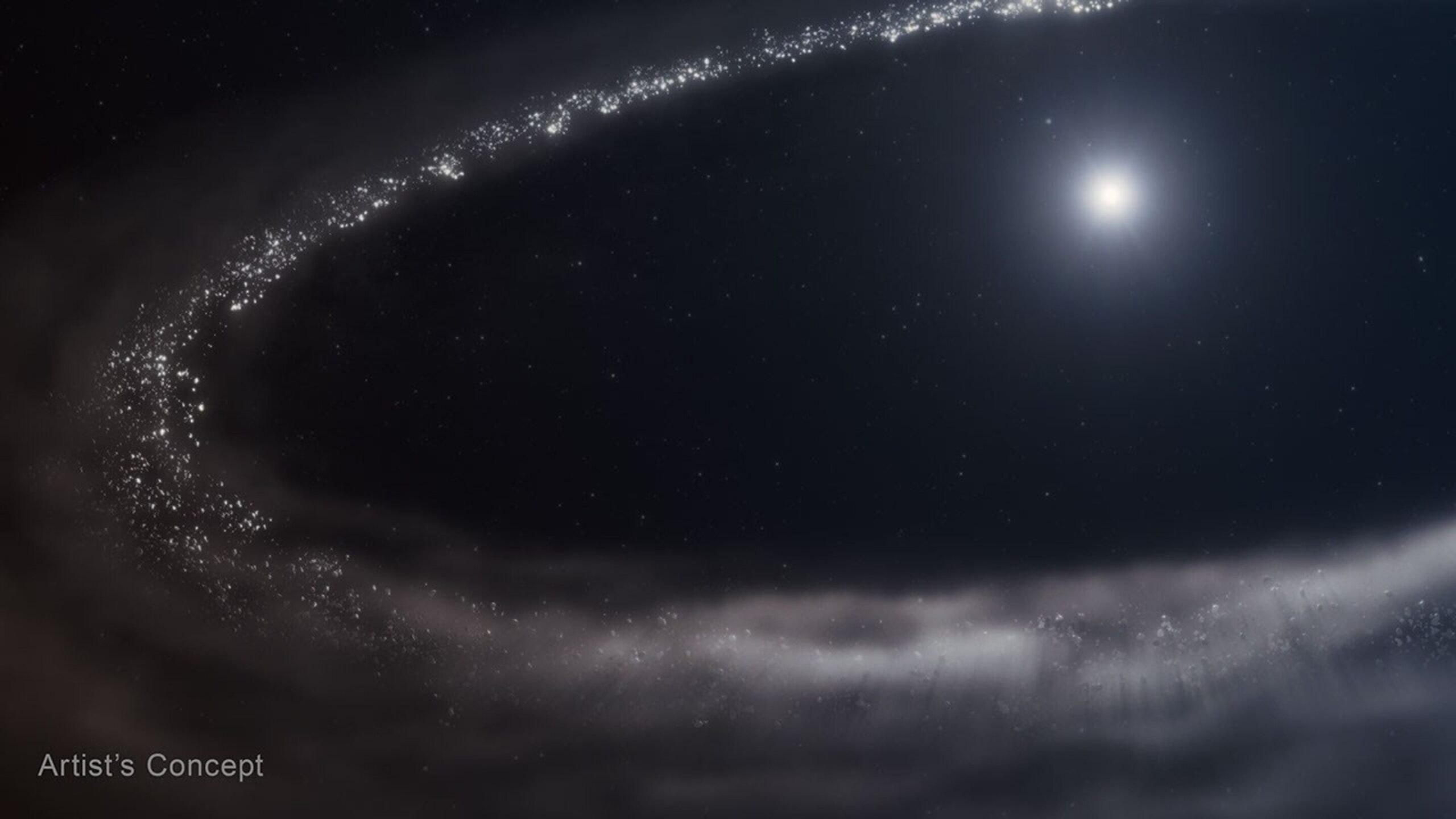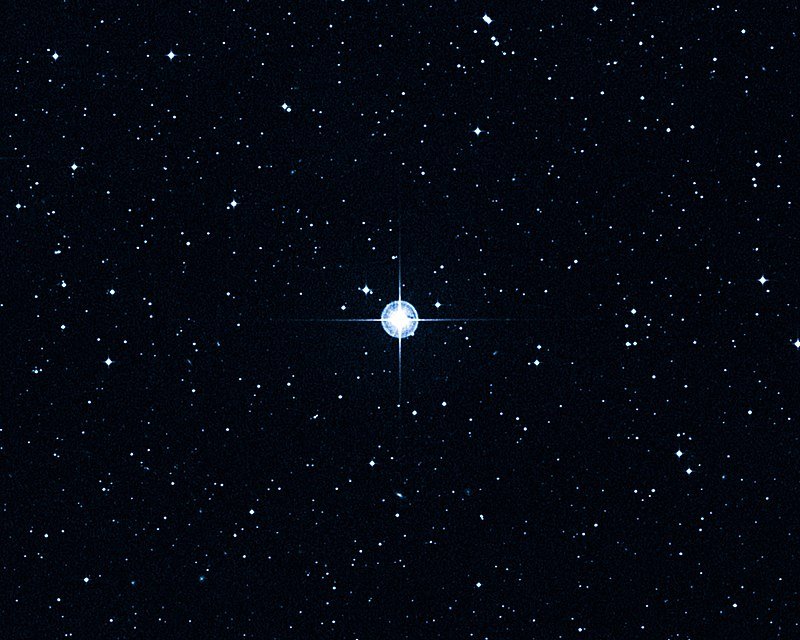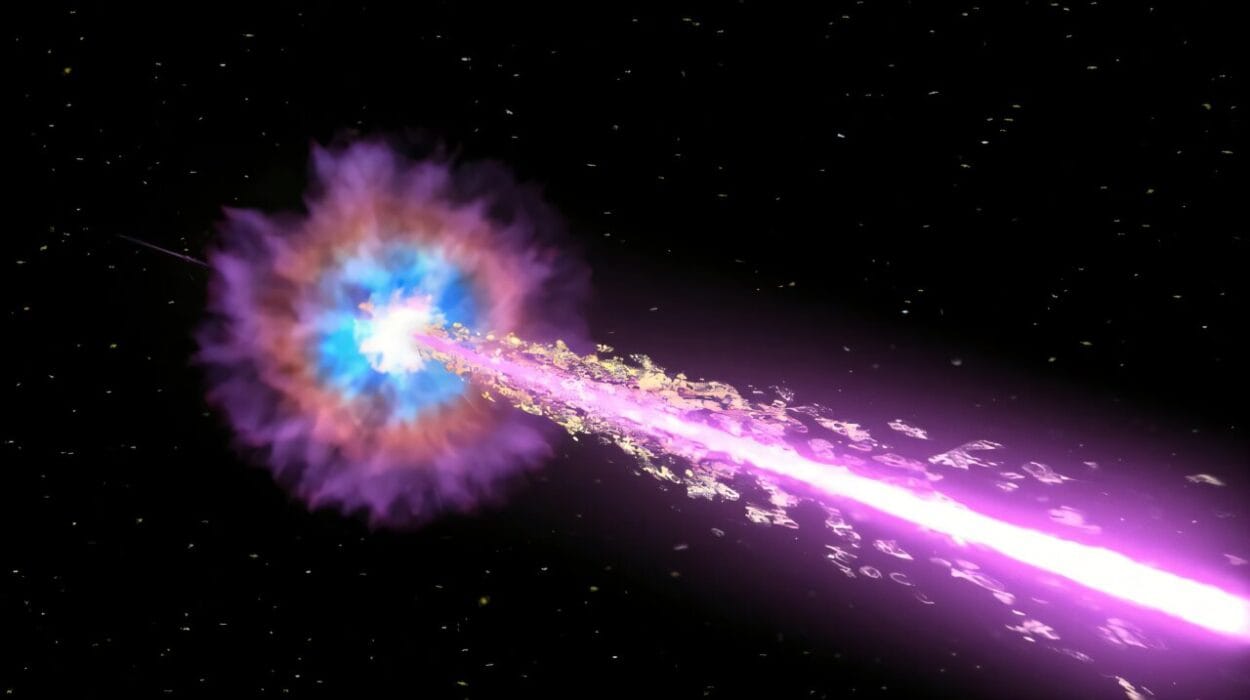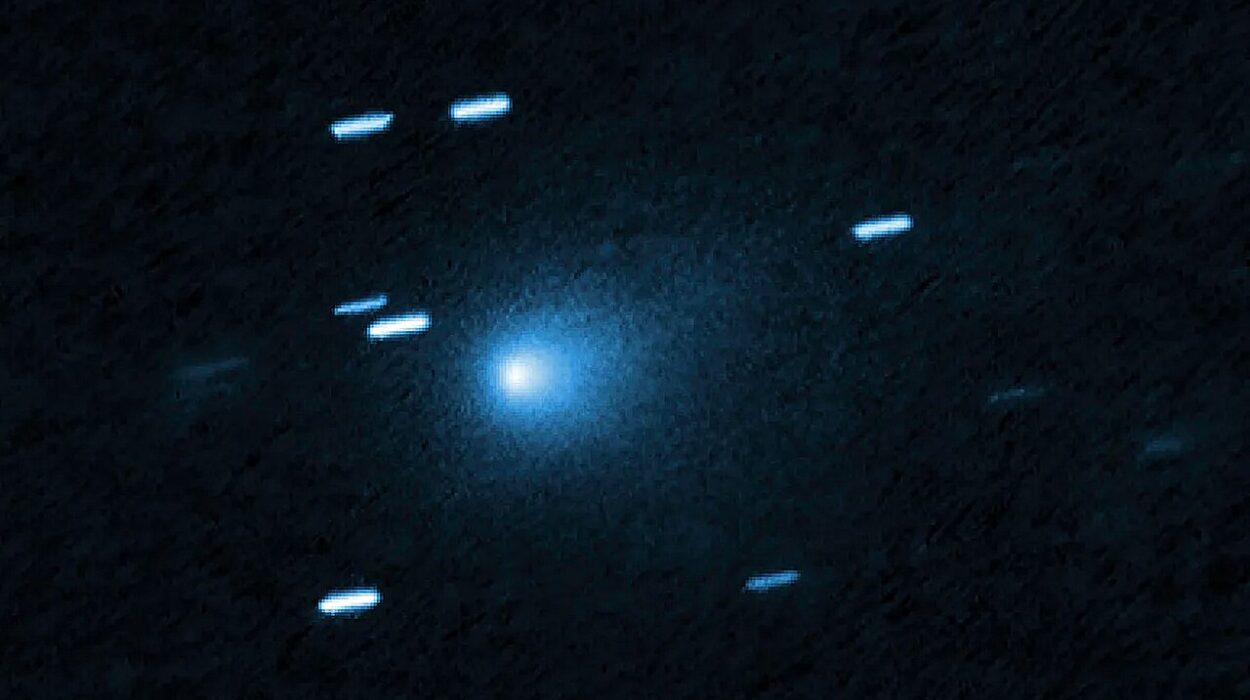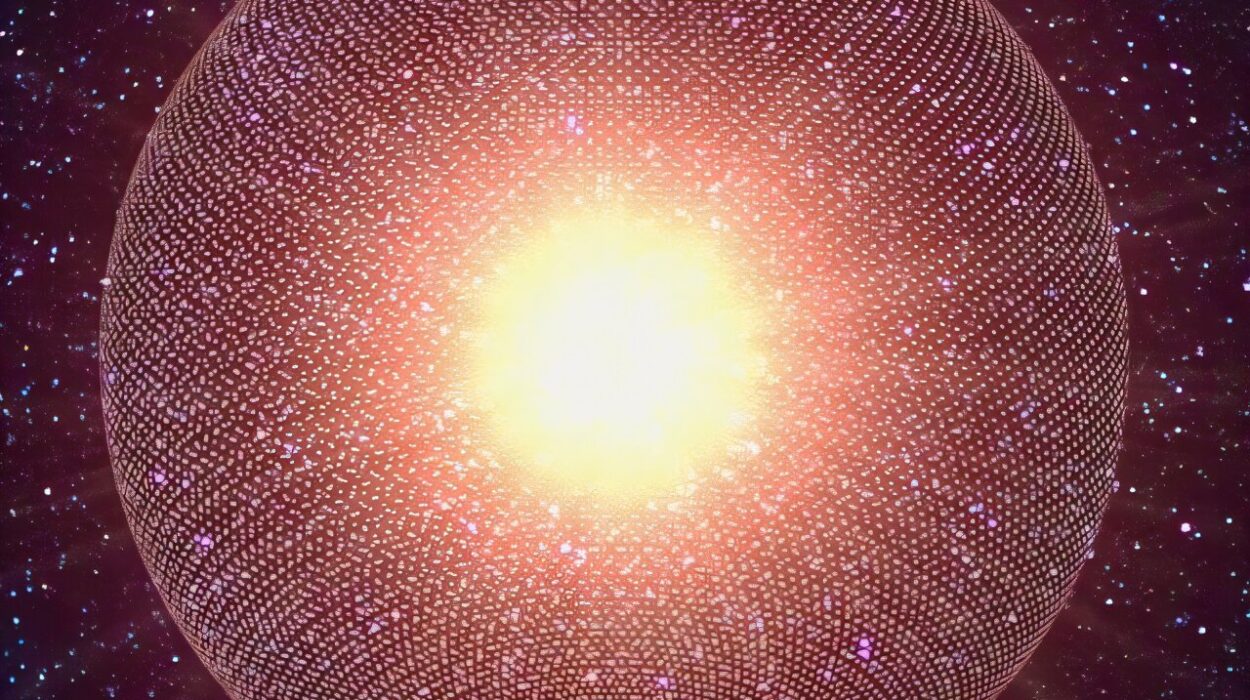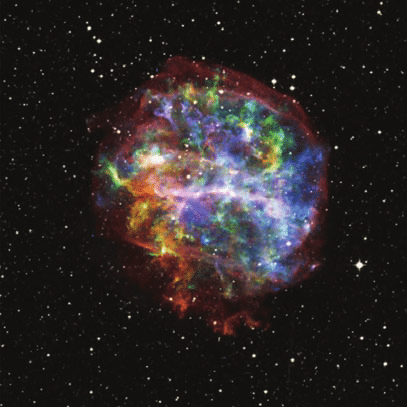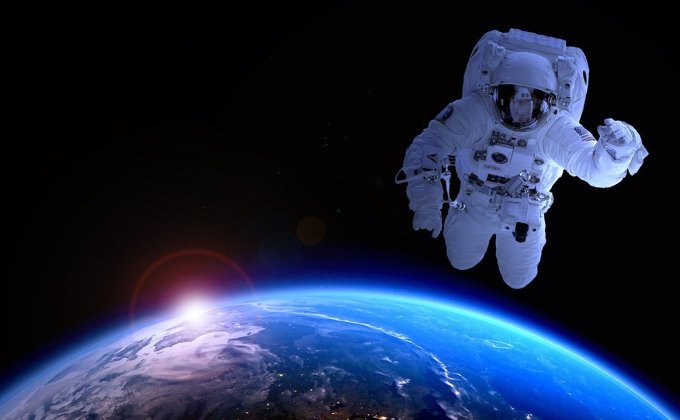In a star system 155 light-years from Earth, scientists have confirmed the shimmering presence of water ice—crystalline and beautiful—encircling a young, sun-like star named HD 181327. Using the unparalleled sensitivity of NASA’s James Webb Space Telescope (JWST), astronomers have now spotted what they’ve suspected for decades: frozen water, not just as fleeting vapor, but in its solid, gleaming form, bound to tiny dust grains and scattered across a vast debris disk.
This isn’t just a cool space fact. It’s a breakthrough that fundamentally reshapes how we think about the architecture of distant planetary systems—and perhaps even how life-essential water is distributed across the galaxy.
From Vapor to Ice: A Long-Awaited Confirmation
Astronomers have had tantalizing hints of frozen water in distant systems for years. Gaseous water—water vapor—has been detected in exoplanet atmospheres and protoplanetary disks. The now-retired Spitzer Space Telescope even hinted at frozen water in the HD 181327 system as early as 2008. But until now, these were just shadows of certainty. The direct detection of crystalline water ice—ice that forms beautiful, ordered structures—needed something far more sensitive.
Enter Webb.
With its powerful Near-Infrared Spectrograph (NIRSpec), Webb collected light spectra from HD 181327’s debris disk and delivered an unmistakable signature: the spectral fingerprints of crystalline water ice. This discovery was published in Nature, marking a major leap in our understanding of how water—and possibly life—might spread through the universe.
Why “Water Ice” Matters in Space
In everyday life, the term “water ice” sounds redundant. But in astronomy, it’s an important distinction. Space is littered with ices—frozen carbon dioxide (dry ice), frozen methane, ammonia, and more. So when researchers say “water ice,” they mean H₂O frozen into solid form. And crystalline water ice is even more specific: it’s not amorphous or randomly structured—it’s been frozen in a calm, orderly way, hinting at how and where it formed.
Crystalline water ice isn’t just an exotic curiosity. It plays a key role in shaping planets, moons, and maybe even life itself. It’s found in the rings of Saturn, on Jupiter’s moon Europa, and throughout the frigid Kuiper Belt at the edge of our own solar system.
Now, thanks to Webb, we know it’s also orbiting a distant star.
Meet HD 181327: A Young and Lively Star
HD 181327 may resemble our Sun in mass, but it’s a much younger star—only 23 million years old, compared to our Sun’s 4.6 billion years. This youthful energy comes with higher temperatures and a bustling planetary environment. Think of HD 181327 as a cosmic nursery where new worlds are still forming and icy materials are colliding, combining, and spreading.
What Webb revealed is a massive debris disk circling this star. It’s not just a random spread of rubble. There’s structure. There’s movement. There’s drama. Between the star and its disk lies a wide, clean gap—likely cleared by an emerging planet or powerful gravitational interactions. Farther out, the disk looks eerily similar to our own Kuiper Belt, that mysterious zone of icy rocks, comets, and dwarf planets beyond Neptune.
And in this far-flung region of HD 181327’s disk lies the greatest concentration of frozen water.
Cosmic Snowballs in Orbit
Chen Xie, the lead author of the new study and a research scientist at Johns Hopkins University, described the discovery vividly: Webb didn’t just detect ice—it detected “dirty snowballs.” These are fine particles of dust clinging to frozen water, much like the makeup of comets in our solar system.
And they’re everywhere—swirling, smashing, reforming. When icy bodies collide in HD 181327’s debris disk, they shatter and spread tiny fragments of water ice throughout the system. Webb’s sensitivity is so extreme that it can pick up the infrared light bouncing off these minuscule ice grains.
This isn’t static. It’s dynamic. It’s a system alive with collisions, creation, and cosmic reshuffling.
A Layered Icy Landscape
The ice in this star system isn’t evenly distributed. The farther you go from the star, the more ice you find. At the outermost edges, over 20% of the material is frozen water. Closer in, that drops to about 8%. And nearest to the star, ice is virtually absent.
Why? Stellar radiation. The closer to HD 181327 you get, the more ultraviolet radiation there is. That energy blasts frozen particles, vaporizing them before they can accumulate. It’s also possible that in these warmer inner regions, water is hidden inside rocky planetesimals—chunks of rock too dense for Webb to see through.
This gradient of ice concentration gives scientists an unprecedented glimpse into how water might move and evolve in forming planetary systems. It’s not just a static reservoir. It’s a constantly changing balance of delivery and destruction.
Why This Discovery Matters
Why should we care about frozen water so far from Earth?
Because water ice is foundational to planet formation. It helps dust grains stick together. It adds mass to forming planets, enabling gas giants to grow. And over time, icy comets and asteroids can deliver water to dry, rocky worlds—just as they may have delivered oceans to early Earth.
The detection of crystalline water ice in HD 181327’s debris disk strongly suggests that this process could be playing out in planetary systems all over the galaxy. It adds weight to the idea that water is not rare. It is widespread, embedded in the early building blocks of planets—waiting to be melted, reformed, and maybe even turned into life.
Christine Chen, a co-author and astronomer at the Space Telescope Science Institute, reflected on the momentous nature of the data: “When I was a graduate student 25 years ago, my advisor told me there should be ice in debris disks, but prior to Webb, we didn’t have instruments sensitive enough to make these observations.”
Thanks to JWST, we do now.
The Bigger Picture: Water Across the Galaxy
The implications ripple outward.
HD 181327 is just one system, but Webb is designed to explore many more. Every icy detection adds a data point to a grander story: how common water is in the universe, and how often it finds its way onto planets.
The presence of crystalline water ice also lets astronomers infer temperatures, radiation environments, and chemical conditions in the distant disks they observe. And it may help researchers refine models of how planets accrete materials and grow over time.
For astrobiologists, this is exciting news. If water is this abundant in young systems, it raises hopes that habitable environments—perhaps even Earth-like worlds—are more common than we dared to imagine.
Webb’s Role in the Ice Age of Discovery
This discovery showcases just one of the James Webb Space Telescope’s revolutionary capabilities. Its instruments are so precise they can measure light from individual dust grains across light-years. Its infrared eyes allow us to see through dense clouds and past the blinding light of stars. And its data is opening up a new era of exploration, where questions about the origins of water—and life—can finally be answered.
The detection of frozen water in HD 181327’s debris disk is not the end of a journey. It’s the beginning. The start of a new cosmic ice age, driven not by cold winds, but by the blazing light of a telescope orbiting far above Earth.
Toward a Watery Cosmos
Water is the lifeblood of Earth, and now, we’re learning it may be the lifeblood of countless other worlds too. In systems young and ancient, in places near and far, frozen water persists. It clings to dust, hides in comets, and waits to be melted by the warmth of a newborn sun.
With JWST, humanity now has a front-row seat to the great story of water in the universe.
And this is just the beginning.
Reference: Chen Xie et al, Water ice in the debris disk around HD 181327, Nature (2025). DOI: 10.1038/s41586-025-08920-4
